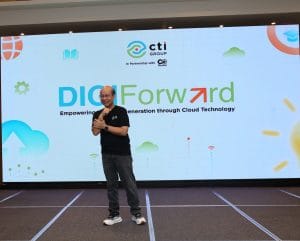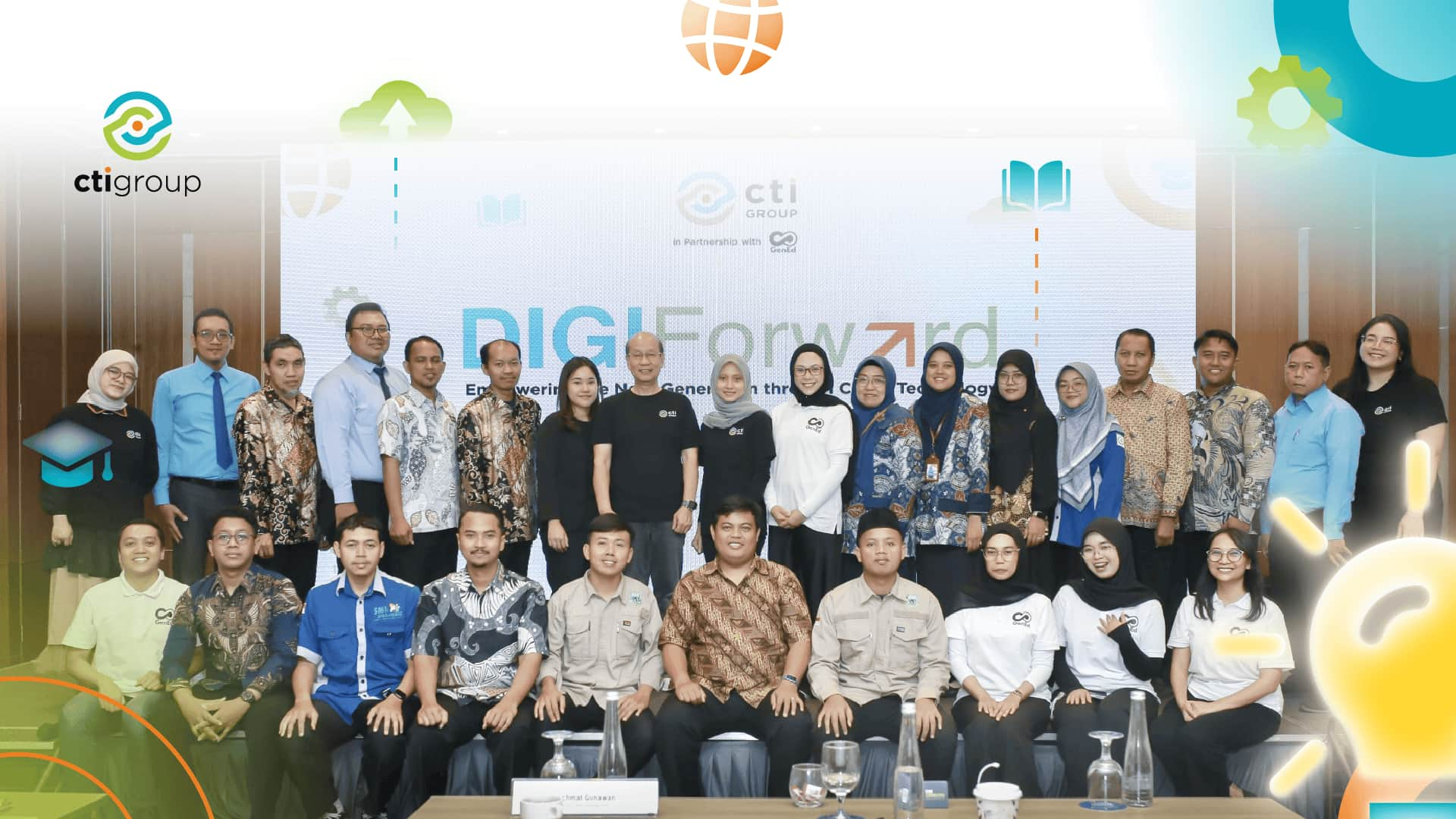Remember when learning only happened in the classroom, with rows of desks and a blackboard in front? Things have changed dramatically. Cloud computing bridges the gap of space and time, opening the door to more inclusive, flexible, and accessible education for everyone, everywhere.
But despite its massive potential, many educational institutions in Indonesia still struggle to leverage this technology to its fullest. Why is that? And how exactly can cloud computing be the key to solving our biggest educational challenges?
Let’s explore the answers through six transformative benefits this technology brings to the table.
6 Benefits of Cloud Computing in Education
Cloud computing is one of the most impactful technological innovations in the education sector. It benefits not only students and educators, but also schools, content providers, and other stakeholders.
From enabling digital learning to streamline operations, here are some of the most important ways cloud computing is shaping the future of education.
1. Enabling Easy & Flexible Online Classes
Today’s virtual classrooms wouldn’t be possible without cloud-based platforms. During the pandemic, cloud computing became the backbone of remote learning.
Thanks to scalable infrastructure, schools and universities can deliver virtual classes through tools like video conferencing, digital course materials, and online assessments. Learning Management Systems (LMS), for example, run entirely on cloud infrastructure.
2. Supporting Modern & Interactive Learning Methods
Cloud technology paves the way for more interactive and flexible learning models such as hybrid learning, blended learning, and flipped classrooms. Teachers can instantly share notes, materials, and assignments in real time, while students can access grades, recorded lectures, or additional resources anytime; no printed textbooks are required.
3. Reducing Educational Costs
Cloud computing helps reduce costs for both students and institutions. Instead of investing in expensive textbooks or special devices, students can use their own devices to access e-books, online videos, or join virtual classes. On the institutional side, the cloud minimizes the need for physical infrastructure and ongoing IT maintenance costs like local servers or hardware upgrades.
4. Minimizing Hardware Dependency
All learning materials can be stored and accessed online through the cloud. No more USB drives or relying on a single device, teachers and students can access their data anytime, from anywhere, as long as they’re connected to the internet. This flexibility creates a more seamless and efficient learning experience.
5. Scalable for Large User Bases
Educational institutions often serve hundreds or even thousands of users. Cloud computing is designed to scale with ease, supporting simultaneous access, large storage capacity, and compatibility across devices. This ensures smooth, collaborative, and real-time learning for everyone involved.
6. Ensuring Data Security
Storing sensitive data locally comes with risks like hardware failure or cyberattacks. Cloud providers offer safer alternatives with multiple layers of security, such as encryption, automatic backups, and protection against unauthorized access. That’s why storing education data in the cloud is a smarter, more secure option.
Why Cloud Computing Adoption Is Still Uneven in Education
Cloud computing brings flexibility, scalability, and efficiency to the education world, but adopting this technology isn’t always easy. Many schools and institutions in Indonesia still face real-world challenges that slow down cloud adoption. Here are some key hurdles that need to be addressed to unlock its full potential.
1. Limited Internet Infrastructure
One of the biggest roadblocks is internet access, especially in rural or remote areas. Cloud-based learning tools rely on stable, high-speed internet connections to work properly. Without proper infrastructure in place, it’s hard for students and educators to access these tools consistently, limiting the overall impact of cloud technology.
2. Low Digital Literacy
Not every teacher, staff member, or student is familiar with digital tools, let alone cloud platforms. In some schools, especially in early education or underserved areas, the lack of digital literacy creates a barrier to adoption. Without the right skills or understanding, it’s hard to make the most of cloud-powered learning. That’s why continuous training and support are key to making this transition smoother.
3. Concerns About Data Privacy and Security
Storing sensitive information like student records, grades, and academic files in the cloud naturally raises questions about privacy and security. Some institutions are hesitant to move to the cloud because of fears around data leaks, hacking, or unauthorized access. Trust in cloud solutions needs to be built through strong security practices and clear policies.
4. Dependency on Third-Party Providers
When schools use cloud platforms, they rely on external service providers for essential operations. If the provider experiences downtime or technical issues, it can directly impact the teaching and learning process. That’s why choosing a reliable partner, with clear service agreements and strong collaboration, is crucial for long-term success.
5. The Need for Training and Cultural Shift
Moving to the cloud isn’t just about adopting new software, it’s a mindset shift. It changes how teachers work, how schools manage data, and how students learn. Without proper training and a readiness to adapt, this transition can easily stall. Institutions need to invest in people, not just technology, to ensure digital transformation actually works.
CTI Group’s Real Commitment to Driving Cloud Adoption in Education

The various challenges in implementing cloud computing in education highlight the importance of cross-sector collaboration. This is where the role of the tech industry becomes crucial, bridging the gap between the education sector and the demands of the modern workforce.
To address this need, CTI Group launched DIGIForward, an initiative designed to promote the relevant, practical, and sustainable use of cloud computing in vocational high schools (SMK).
With the theme Empowering the Next Generation through Cloud Technology, this program reflects CTI Group’s commitment to nurturing digital talent from the vocational education level. In collaboration with Generation Educators (GenEd), a key insight emerged: 90 percent of SMKs in Surabaya and Sidoarjo still teach cloud computing only in theory, without adequate hands-on practice.
DIGIForward aims to change that. The program begins with intensive training for 20 selected SMK teachers, equipping them with in-depth knowledge of cloud computing, design thinking approaches, and strategies to integrate technology into their curriculum. These teachers are empowered to become digital transformation champions in their schools.
The next phase focuses on students majoring in Software Engineering (RPL). They will receive mentorship in developing cloud-based digital projects, culminating in the creation of a Minimum Viable Product (MVP).
But DIGIForward is more than just a technical training program; it’s a concrete step from CTI Group in supporting future-ready education. It helps build a technology-driven learning ecosystem with a real impact on teachers, students, and school communities.
It’s Time to Transform: Shape the Future of Education with CTI Group

Digital transformation in education is no longer optional; it’s essential to prepare students who are adaptive, innovative, and ready for what lies ahead. But to make a meaningful impact, strong collaboration is needed between educational institutions and technology partners who understand the evolving industry landscape.
As a trusted technology partner, CTI Group is ready to support your institution in adopting cloud computing effectively and sustainably. Talk to our team of experts and discover the right solutions to help you build a future-ready learning ecosystem.
Reach out to us through the link below and take the first step toward transformation today.
Author: Wilsa Azmalia Putri – Content Writer CTI Group

